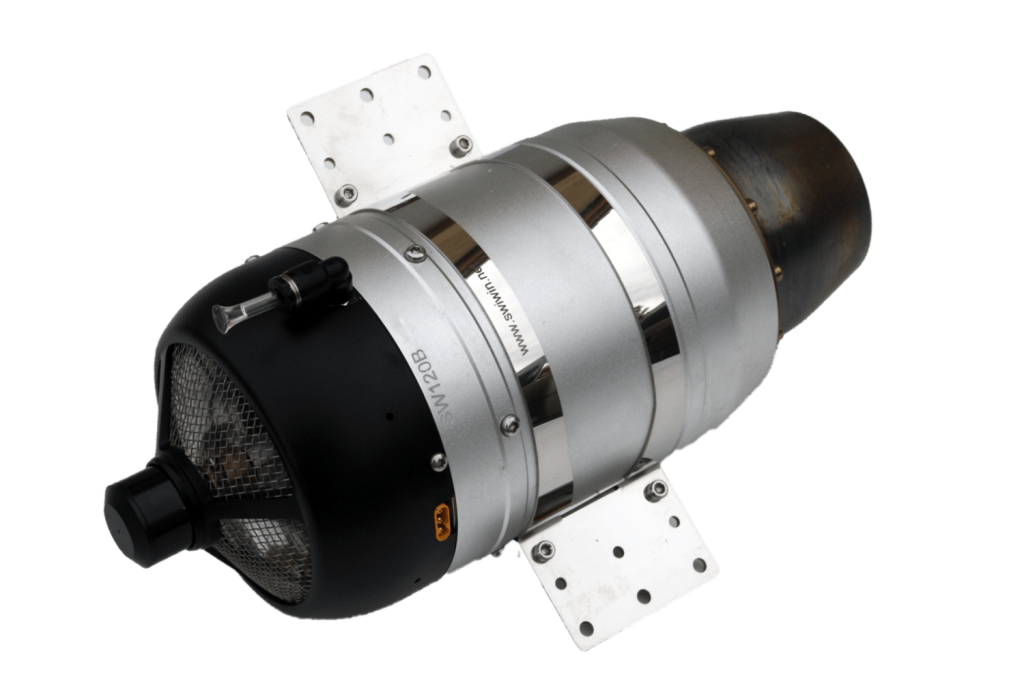The microjet operating on jet-a fuel at 120,000 rpm at Aviation H2’s workshop. Initially, you can see the flame burning and the metal exhaust at a red-hot heat.
Aviation H2 has commenced testing on a Swiwin SW170b-2448 turbine, using jet a-fuel, so they have the baseline data required to compare the engine’s performance once they convert it to a carbon-free fuel.
Now that the initial trials are complete, the Company will start pulling apart the engine and designing the modifications, then rebuild it so it runs on liquid ammonia, the Company’s hydrogen carrier of choice.
This forms a key part of Aviation H2’s strategy, as success will deliver a proof of concept for the flame in the engine to combust and power the turbine at 100 per cent capacity.

“This is a significant step forward for Aviation H2,” says Aviation H2 Director & Principal Engineer, Helmut Mayer. “We have collected solid data from the initial tests and are ready to begin taking the engine apart so we can start designing the necessary modifications.”
Once the jet engine is operating off liquid ammonia, Aviation H2 will conduct a rigorous testing process to optimise its performance.
“Once we have proven liquid ammonia can power the engine cleanly at 120,000 revs per minute, we will have shown the modification model we developed in the feasibility study conducted earlier this year to be correct. Following this, we will enter the next stage of developing our technology, which will see us purchase a Dassault Falcon 50 and begin converting the plane for emissions-free flight using liquid ammonia.”
With a proof of concept set to be delivered, the Company will then look to run a test flight with a Dassault Falcon 50.